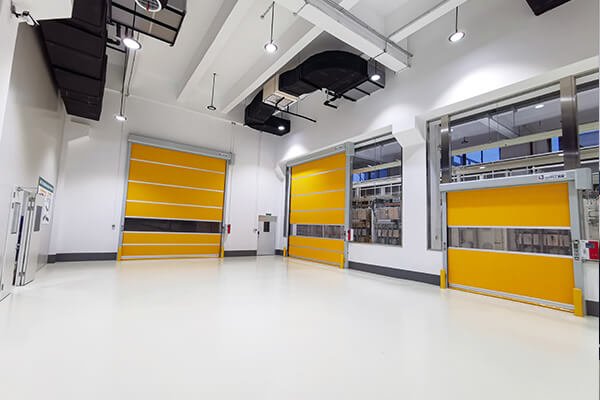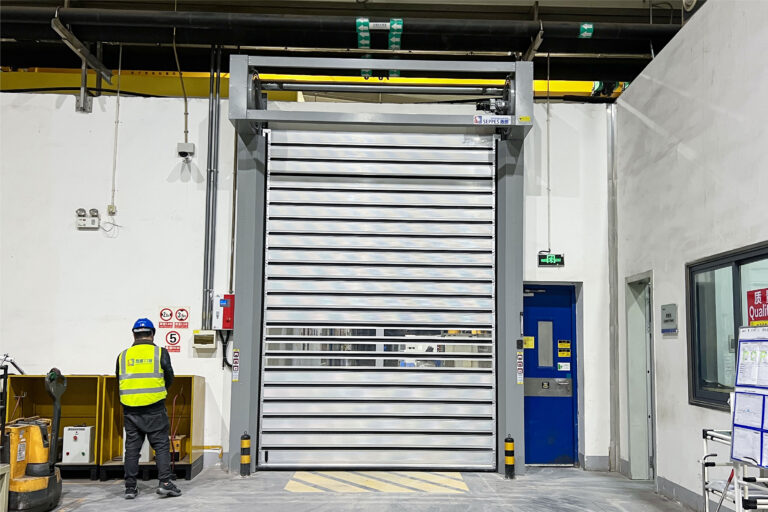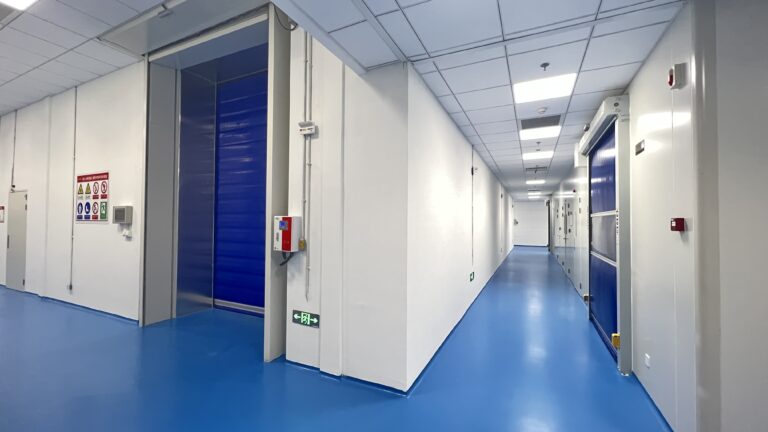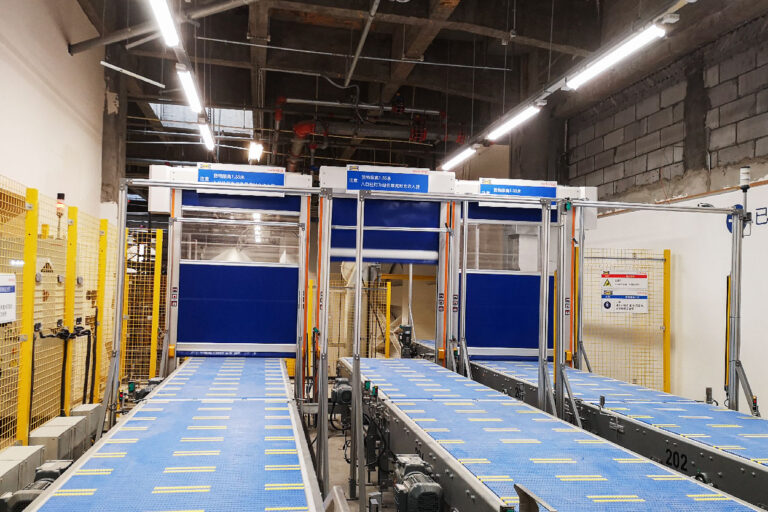Market Status and Industry Trends
In recent years, with the continuous upgrading of Brazil’s manufacturing, port logistics, and warehousing infrastructures, industrial doors have been increasingly used in major factories, warehouses, and, commercial facilities as an important piece of equipment to improve operational efficiency and ensure safety. Due to a lack of local production capacity, the market relies on imported products for a large part of its needs, especially industrial door solutions with proven technology and superior pricing.
On April 9, 2025, Brazil released the latest tax policy standard for industrial door import duties, VAT, and other related fees. This change not only directly affects the procurement cost of imported products, but also prompts enterprises to make more precise decisions on supplier selection and cost control, so as to realize the double improvement of product quality and operational efficiency.
Analysis of mainstream Industrial Door types in Brazil market
For different application scenarios, there are mainly the following types of industrial doors in the market, which are explained in detail below with the combination of technical features and use scenarios:
High-speed Rolling Door

Features: Adopting an advanced servo control system to realize fast opening and closing of 1.5~2.0 m/s; the door curtains have been designed with thickening, which can withstand high-frequency use; lightweight and corrosion-resistant frame Lightweight and corrosion-resistant frame helps to extend the product life.
Applicable scenes: logistics centers, food processing workshops and cold storage and other places that require frequent opening and closing and high sealing.
Industrial Sectional Door
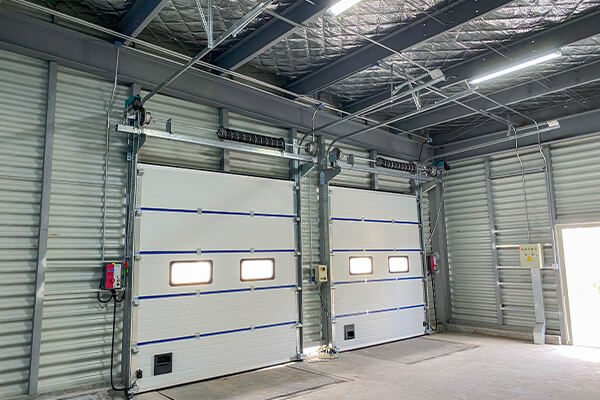
Features: made of multiple solid door panels spliced together, with excellent thermal and acoustic insulation; optional electric and manual operation to meet the needs of large area openings.
Applicable scenes: Widely used in manufacturing factories, workshops, and large warehouses, especially suitable for areas with high requirements on space utilization and energy efficiency.
Aluminum Rolling Door
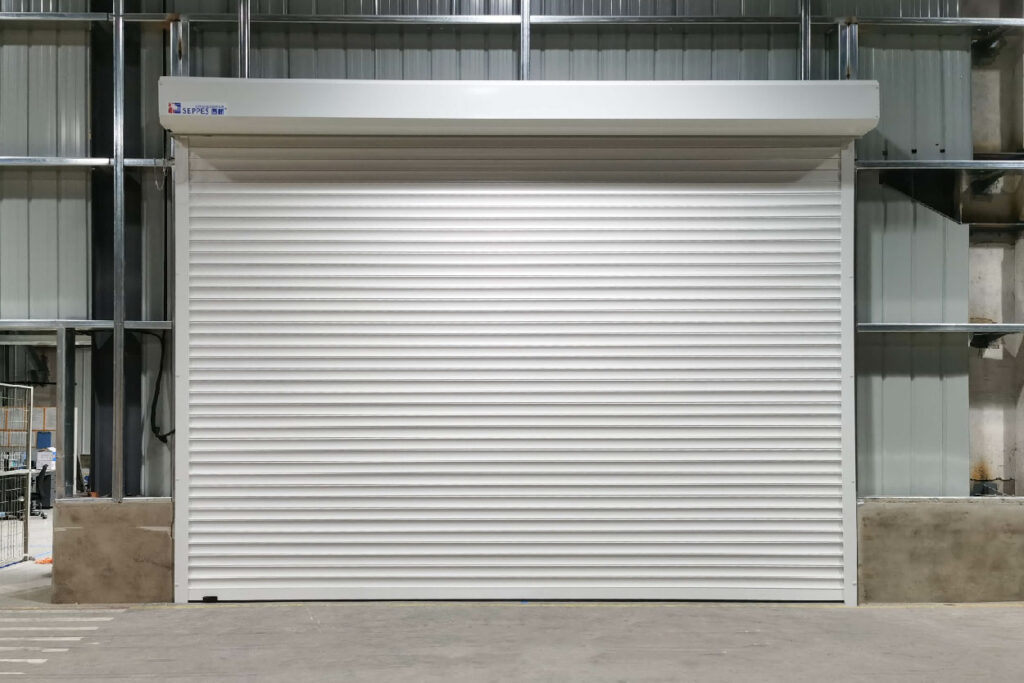
Features: Made of high-quality aluminum alloy with special surface treatment, it is both beautiful and has excellent corrosion resistance; compact design and easy installation.
Applicable scenes: suitable for commercial stores and industrial warehouses, taking into account the appearance effect and structural safety.
Insulated Industrial Door
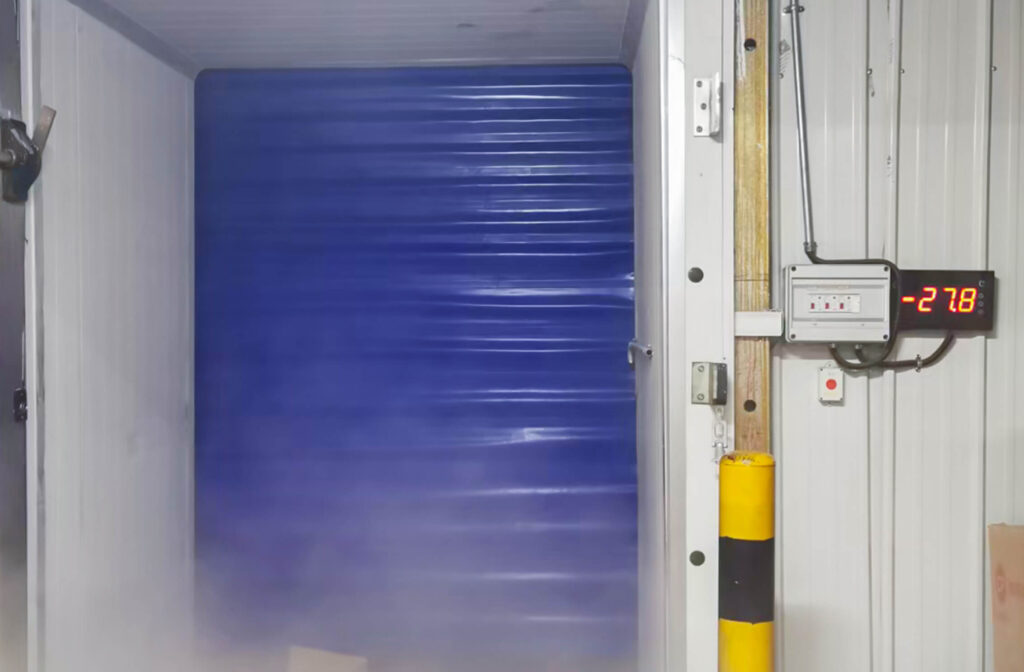
Features: Multi-layer composite structure design with high-quality thermal insulation materials, significantly reducing energy consumption; durable frame to ensure stability in extreme temperatures.
Applicable scenarios: designed for cold chain logistics and temperature-controlled workshops, to meet the high requirements for temperature and humidity control of the environment.
Fireproof Industrial Door
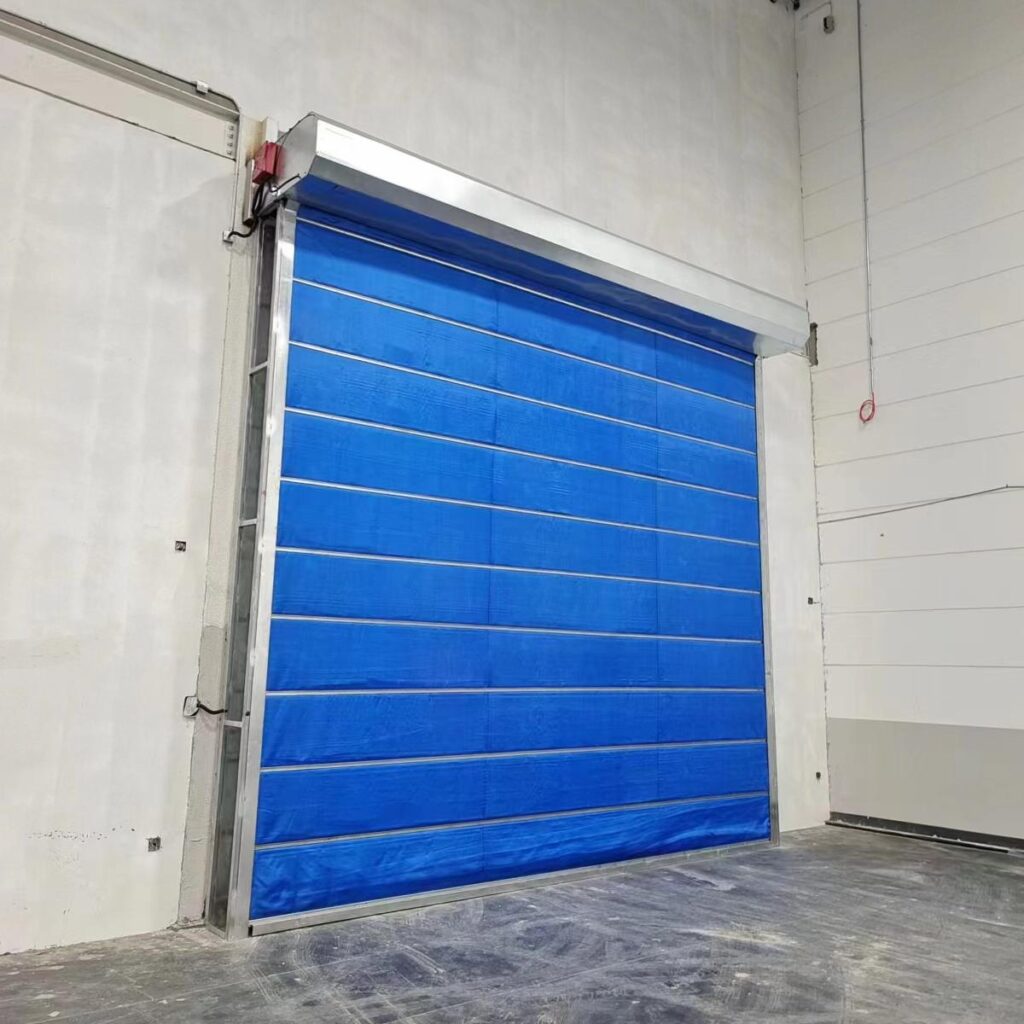
Features: using high-temperature resistant materials that meet the fire prevention standards, designed to meet the international fire code; with good fire resistance performance, it can slow down the spread of fire in the early stage of fire.
Applicable scenes: Commonly used in airports, laboratories, chemical plants, and other places with high-security requirements.
Comparison Table of Mainstream Industrial Door Types in Brazil
| Types of Industrial Doors | Opening speed | Insulation/Sealing Performance | Main application scenarios | Key Advantages |
| High-speed Rolling Door | ★★★★★ (1.5-2.0 m/s) | ★★★★☆ | Logistics centers, cold chain workshops, food factories | Fast opening, high-frequency operation, energy saving and dust reduction |
| Industrial Sectional Door | ★★★★☆☆ | ★★★★★ | Factory floors, large warehouses, maintenance garages | Good insulation and soundproofing, solid structure, suitable for large openings |
| Aluminum Alloy Rolling Door | ★★★★☆ | ★★★★☆☆ | Commercial buildings, storage aisles, small industrial areas | Beautiful appearance, lightweight and anticorrosive, easy to install |
| Thermal Insulation Industrial Door | ★★★★☆☆ | ★★★★★ | Refrigerated warehouses, thermostatic production areas, cold chain warehouses | Excellent thermal insulation and heat preservation, energy saving and emission reduction |
| Fireproof Industrial Door | ★★★☆☆☆☆ | ★★★★☆☆ | Laboratories, chemical plants, airports and other high-security areas | Flame-retardant and heat-resistant, certified for fire prevention, improved safety level |
Interpretation of the criteria of the latest tax policy of April 9, 2025
The adjustments of the latest Brazilian tax policy have had a significant impact on the cost composition of imported industrial doors. According to the new standards issued on April 9, 2025, the main changes are as follows:
Changes in tariffs and other taxes
| Items | Pre-adjusted tax rate | Adjusted tax rates (from April 9, 2025) |
| Import Tariff (II) | 14%-16% | Reduced to 12%-14% |
| Industrial Products Tax (IPI) | 5%-10% (depending on product) | IPI eliminated for some products (depending on HS code classification) |
| Value Added Tax (ICMS) | approx. 18% | Largely unchanged at 18%, with a slight reduction to 17% in some states |
| Other Surcharges (PIS/COFINS) | 9.25% | Slightly lower overall tax burden after consolidated tax calculation |
Note: Brazil has a cascading tax system, and while the tax rates for some items have been reduced, the overall import cost still requires a comprehensive calculation of all taxes and fees.
Specific impact of the new policy on the import of industrial doors
Cost reduction: For some industrial door products that were originally subject to IPI, the adjustment of the new policy helps to reduce the tariff portion, which in turn reduces the purchase unit price.
Product selection: For products with higher material and technical configuration (such as fireproof and advanced thermal insulation doors), the new tariff rate has a more obvious impact on their cost due to certification requirements and HS code division.
Supply Chain Management: Enterprises need to plan customs clearance and logistics processes in advance to ensure complete information and improve customs clearance efficiency so as to fully utilize the policy benefits.
How to Select Suppliers in the Context of New Tax Rates
In the current tax rate environment, the right choice of suppliers is critical to reducing import costs. The following are important factors that companies should consider when selecting suppliers:
Local Manufacturing vs. Imported Products Comparison
| Comparison item | Locally manufactured | Imported products (e.g., from Chinese suppliers) |
| Product type | Limited types and slow technological upgrading | A wide range of products, mature technology and support for customization |
| Cost structure | Import duty exemption, but higher unit price | Significant overall cost advantage under preferential tax rates |
| Quality standard | Difficulty in meeting international certification for some products | Most of the products have international certifications such as ISO, CE, UL, etc. |
| Delivery lead time | Timely supply but limited range of products | Supplied by sea, delivery lead time needs to be planned in advance |
Advantageous Features of Preferred Suppliers
Price Advantage: Despite the need to pay a certain amount of import tax fees, the overall cost of Chinese suppliers is still more competitive than European and American suppliers due to lower production costs and batch size advantages.
Customized service: Support customized door size, motor voltage (e.g. 220V/60Hz), and other personalized needs according to customers’ requirements.
Quality Assurance: Products are generally certified internationally and meet the safety and durability standards of the Brazilian market.
Supply Chain Support: We have a perfect logistics management and after-sales service system, which helps to ensure the efficient delivery of products and provides installation and commissioning guidance.
Industrial Door Installation and Maintenance Strategies
Proper installation and maintenance not only ensures product performance but also prolongs the service life of the equipment. It is recommended to pay attention to the following points:
Preparation before installation
On-site measurement: accurately measure the size of the door opening to ensure that the product matches the installation environment.
Power Configuration: Configure the appropriate motor and control equipment according to the local voltage (e.g. 220V/60Hz) in Brazil.
Equipment Layout: Confirm whether the ground is flat or not, and plan the installation position and safety protection measures in advance.
Routine Maintenance
Carry out regular equipment inspection and maintenance to ensure the long-term stable operation of industrial doors:
Clean the tracks regularly to prevent blockage by foreign objects;
Check the working status of the motor, remote control system, and safety parts, and replace or repair them in time when problems are found;
Lubricate the key parts quarterly to ensure the smooth opening and closing of the device.
Troubleshooting
| Frequently Asked Questions | Possible causes | Solutions |
| Door jamming | Debris in track, insufficient lubrication | Clean the rails, replenish the lubrication oil in time |
| Remote control or automatic system failure | Control system malfunction, low battery | Check the controller, replace the battery or commission the system in time |
| Loss of seal after installation | Poor mounting, deteriorated seals | Readjust the installation, replace the sealing parts in time |
Summary: Grasp the tax rate opportunity and optimize the procurement strategy
Under the latest tax rate policy standard on April 9, 2025, the Brazilian industrial door market ushers in new opportunities and challenges. Enterprises should:
Fully understand the technical characteristics and applicable scenarios of various types of industrial doors;
Take advantage of the cost advantage brought by the tax rate adjustment and prefer imported suppliers with international certification and strong customization ability;
Reasonably plan supply chain management to ensure on-time delivery of products and reduce overall procurement costs;
Strengthen the installation and routine maintenance of equipment to improve the use of efficiency and operational safety.
Through the above measures, enterprises can better grasp business opportunities in the fierce market competition and maximize long-term benefits.
FAQ: Brazil Industrial Door Procurement Frequently Asked Questions
Q1: What are the impacts of the latest tariff policy on April 9, 2025 on industrial door imports?
A1: The main adjustments include tariff reduction to 12%-14%, elimination of IPI for some products, ICMS basically maintained at 18% (reduced to 17% in some states), and consolidation of related surcharges, which makes the cost of some industrial door products lower.
Q2:How to judge which kind of industrial door is suitable for my factory or warehouse?
A2: You can choose high-speed rolling doors, industrial sectional doors, heat insulation or fire doors, etc. according to the frequency of passage, temperature control needs, sound insulation and fire prevention requirements of factories or warehouses.
Q3:What should be noted when choosing imported suppliers?
A3:Suppliers should have international certification, customized service capabilities and perfect after-sales support, while focusing on their logistics cycle and overall price advantage.
Q4:What are the key points of attention for product installation and daily maintenance?
A4: The focus is on accurate on-site measurements, matching the correct power supply, and regular checking of lubrication, cleaning of rails, and maintenance of the control system.

